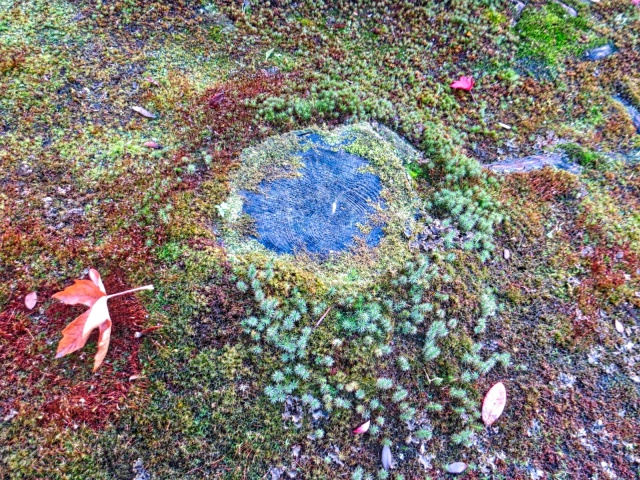USDA has a handy plant database: it will provide a classification of a moss at every rank of the Linnean system; for example typing ‘dicranum’ into its search box returns 32 records for this classification. That probably means USDA recognizes 32 species of dicranum – its maps suggest that it only covers north american continent and territories + some places that geographically made it to the coverage area, like Greenland (Denmark) or St. Pierre and Miquelon (France).
If you further click on ‘dicranum howellii’ the USDA database will display this:
Kingdom Plantae – Plants
Division Bryophyta – Mosses
Subdivision Musci
Class Bryopsida – True mosses
Subclass Bryidae
Order Dicranales
Family Dicranaceae
Genus Dicranum Hedw. – dicranum moss (P)
Species Dicranum howellii Renauld & Cardot – Howell’s dicranum moss (P)
Clicking on the ‘plant profile’ (P) will give you more info, but altogether it’s a rather technocratic, albeit still nifty tool: click all you want to get a map, a dryly written ‘growth habit’ or ‘native status’, a common name and sometimes a picture, but you will need to search elsewhere to actually familiarize yourself with each particular moss or find out about its world’s distribution…
Out of curiosity, I entered all 8 ground moss genera that this blog will attempt to cover in 2017. The results give you some idea on where Seattle Japanese Garden’s mosses stand in the USDA moss classification:
• Atrichum – 10 records returned, out of which SJG has one (undulatum) or two (selwynii – jury still out on this one)
• Calliergonella – 2 records returned, SJG has one ID-ed so far (cuspidata)
• Climacium – 4 records returned, one found in SJG (dendroides)
• Dicranum – 32 records returned, only one found so far (howellii), although Arboretum has another kind (tauricum, out of 11 species of Dicranum in WA, per Lee Ellis)
(Leucolepsis) – turned out a wrong genus name, so tried the second part of its name:
• acanthoneuron – one record returned, (Leucolepis acanthoneuron), which means that Mienzies’ tree moss is a class in itself, and SJG has it
• Mnium – 46 records returned; SJG has at least one (undetermined species yet)
• Polytrichum – 19 records returned. of which SJG has at least two (juniperinum & commune)
• Rhytidiadelphus – 5 records returned, of which two were found so far (squarrous & triquetrus)
Special thanks to Lee Ellis, Martin Hutten and Arthur Lee Jacobson for helping to identify our SJG mosses! Questions about moss are among the most often asked by the Garden’s visitors – your assistance in answering them is very appreciated by the public and the Garden’s staff and guides!

SJG • 10/18/2016 – Moss growing around a tree stump in the tea House Garden

